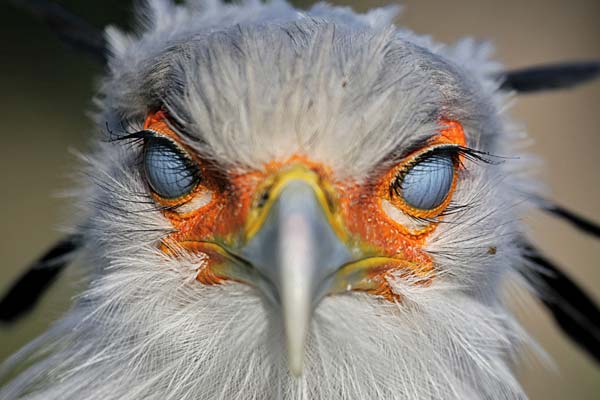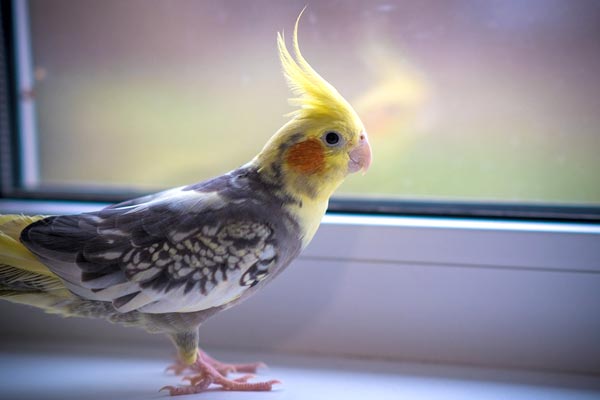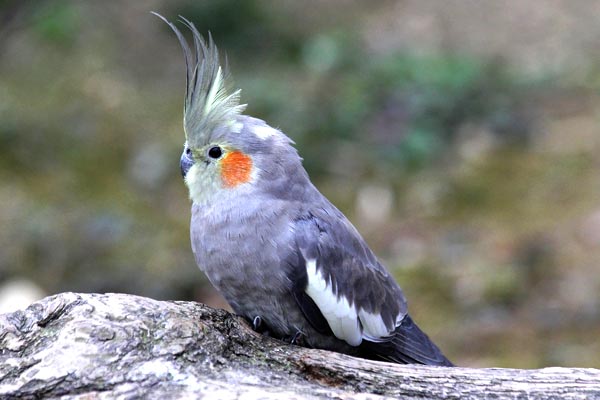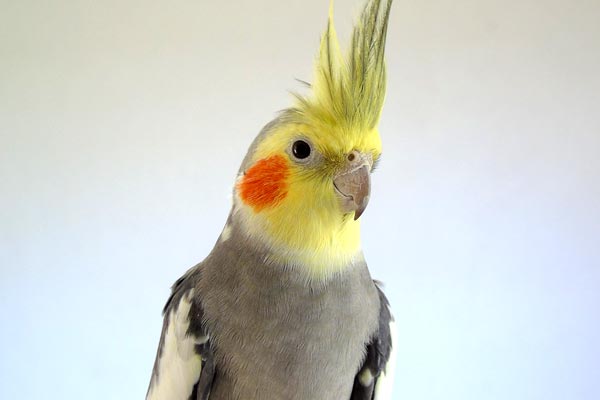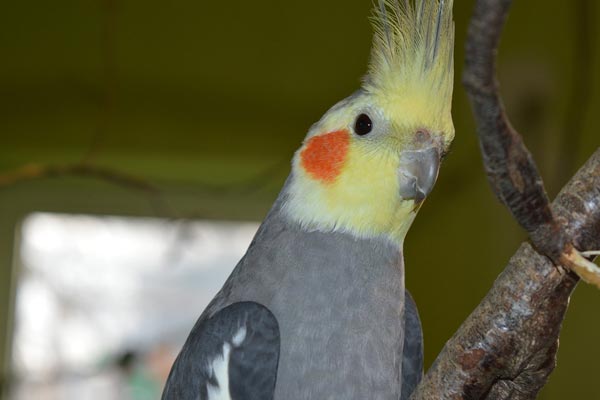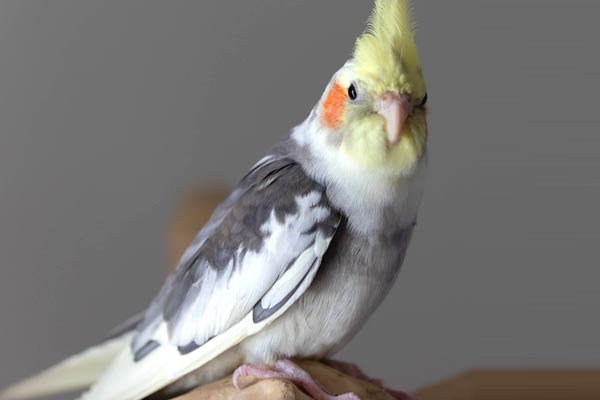Blind Birds: Understanding the Condition and Its Impact on Avian Species
In recent months, there have been reports of blind birds in various regions of the United States. Many of these birds have been found dead or dying, exhibiting symptoms such as disorientation, inability to fly, and loss of vision.
We are still determining why this phenomenon is happening, and experts are working to understand and address the issue.
One possible cause of blindness in birds is vitamin deficiency. Vitamin E and A are essential for healthy eye development; lacking these vitamins can lead to eye disorders.
Age can also be a factor in the development of blindness in birds. However, it is unclear whether these factors are contributing to the current wave of blind birds or if there is another cause at play.
As scientists continue to investigate this issue, taking precautions to protect birds in your area is vital. Removing bird feeders and baths can help prevent the spread of disease, and avoiding contact with sick or dead birds is crucial.
Causes and Types of Blindness in Birds
Various factors, including genetic factors, injuries, diseases, and environmental factors, can cause blindness in birds. Here are some of the most common causes of blindness in birds:
Genetic Factors and Congenital Blindness
Birds can be born blind due to genetic malfunctions or absence. Premature births or early egg hatching can also cause blindness in birds since their bodies are not fully developed. In some cases, birds may inherit blindness from their parents.
Acquired Blindness Due to Injuries, Diseases, or Environmental Factors
Birds can also become blind due to injuries, diseases, or environmental factors. Here are some of the most common causes of acquired blindness in birds:
- Eye injuries: Scratches or physical injuries to the eye can cause vision loss in birds.
- Infections: Fungal infections or conjunctivitis can create vision problems and lead to blindness in birds.
- Cataracts: Cataracts can decrease a bird’s visual acuity and may eventually lead to blindness.
- Environmental factors: Exposure to toxins or chemicals in the environment can cause blindness in birds.
Different types of blindness can affect birds, including partial or complete blindness, temporary or permanent blindness, and unilateral or bilateral blindness.
It is crucial to identify the cause of blindness in birds to provide appropriate treatment and care. Some birds may require special accommodations or adaptations to their environment to help them adjust to their blindness.
Recognizing Blindness in Birds (Case of Budgies)
Birds, including budgies, can experience partial or total blindness for various reasons. It is essential to recognize the symptoms of blindness in birds to provide appropriate care and treatment. Here are some common symptoms of blindness in birds:
Common Symptoms of Blindness in Birds
- Red, weeping eyes
- Gritty, flaking skin around the eye
- Feathers growing into the eye area
- Swelling around the eye area
- A discharge from the eyes
Partial or total vision loss can affect one or both eyes, but domesticated birds will adapt quickly to this condition. However, it is crucial to identify the symptoms of blindness in birds to prevent further complications.
Identifying Blindness in Budgies: Signs and Behaviors
Budgies are social birds and exhibit specific behaviors that can indicate blindness. Here are some signs and behaviors that can help identify blindness in budgies:
- Loss of balance or coordination
- Difficulty navigating the cage or perches
- Hesitancy to fly or climb
- Easily spooked or frightened
- Lack of response to visual cues, such as food or toys
Budgies can also display aggression or irritability due to their inability to see. Observing their behavior and seeking veterinary care is crucial if you suspect your budgie is blind.
Diagnosis, Treatment, and Rehabilitation of Blind Birds
Various factors, including genetics, infections, trauma, and nutritional deficiencies, can cause blindness in birds.
Owners may not always be aware that their bird is blind until a veterinarian points it out. A bird’s ability to adapt to blindness can vary, but it can often adapt quickly as the condition progresses.
Veterinary Diagnosis of Blindness in Birds
Diagnosing blindness in birds challenges veterinarians who may conduct physical exams, blood work, and imaging (e.g., radiographs or CT scans). An ophthalmologist might be consulted for a thorough eye examination.
Available Treatment Options and Their Efficacy
The treatment options available for blind birds depend on the underlying cause of the blindness. Sometimes, treatment may not be possible, and the bird may need to adapt to its new condition. However, some treatment options may include:
- Medications: Depending on the cause of blindness, antibiotics or anti-inflammatories may be prescribed to treat infections or reduce inflammation.
- Surgery: Surgery may be advised to address cataracts or other eye issues.
- Environmental modifications: Owners can modify their bird’s environment to help them adapt to their blindness. This may include rearranging perches and toys to make them easier to navigate or providing auditory cues to help the bird locate food and water.
It is important to note that not all treatments may be effective, and treatment success will depend on the underlying cause of blindness.
Rehabilitation and Success Stories for Blind Birds
Rehabilitation for blind birds can be challenging, but many can adapt to their new condition with time and patience.
Owners can work with their birds to help them navigate their environment and learn to rely on their other senses. Success stories of blind birds adapting to their new condition can be found online and can provide hope and inspiration to owners of blind birds.
Challenges and Adaptations of Blind Birds
Blindness poses significant challenges for birds, hindering their daily activities like foraging and avoiding predators. Despite this, blind birds can adapt and compensate using their other senses.
Survival Challenges and Risks for Blind Birds
Blind birds face survival challenges and risks, including finding food without their vision and being susceptible to predators due to their inability to detect approaching threats or escape swiftly.
In addition, blind birds may have difficulty navigating their environment, especially in an unfamiliar place. For example, they may not be able to find their way back to their nest or roosting spot, which can be dangerous if they are exposed to the elements or predators.
Notable Adaptations and Compensatory Senses
Blind birds overcome challenges by adapting and utilizing other senses, like hearing, touch, or smell, to find food and navigate their environment.
In addition, some species of birds have notable adaptations that help them survive even if they are blind. For example, owls have highly sensitive hearing and can locate prey in darkness. Other birds, such as pigeons, have a strong sense of smell that they use to navigate and find food.
Caring for Blind Birds
Various factors, such as genetic malfunctions, premature births, or injuries, can cause blindness in birds. If you have a blind bird, it is essential to provide them with the appropriate care and attention they need. Here are some tips for caring for blind birds in captivity.
Tips for Caring for Blind Birds in Captivity
- Provide a stable environment: Blind birds need a stable environment with consistent perching areas, food and water dishes, and toys. Rearranging their environment can confuse them and make them feel insecure.
- Keep them away from hazards: Blind birds can easily injure themselves, so it is crucial to keep them away from hazards such as sharp objects, toxic plants, and other pets.
- Use sound cues: Blind birds can use sound cues to navigate their environment. You can use bells or other noise-making toys to help them locate food and water dishes and perches.
- Provide tactile stimulation: Blind birds rely on their sense of touch, so providing them with tactile stimulation can help keep them engaged and happy. You can provide them with different textured perches or toys.
Creating a Safe and Enriched Environment for Blind Birds
- Provide a spacious cage: Blind birds need a spacious cage to move around freely. The cage should be large enough to accommodate their perches, food and water dishes, and toys.
- Use different types of perches: Blind birds need different types of perches to exercise their feet and maintain their balance. You can provide them with perches of varying widths and textures.
- Offer a variety of toys: Blind birds need toys to keep them entertained and stimulated. You can provide them with toys that make noise, have different textures, or have hidden treats.
- Provide natural light: Blind birds still benefit from natural light, so make sure their cage is placed in an area where they can receive sunlight.
Feeding and Assisting Blind Birds in Their Daily Activities
- Hand-feed if necessary: Blind birds may have difficulty finding food and water dishes. You may need to hand-feed them to ensure they have enough to eat and drink.
- Use color-coded dishes: Using color-coded dishes can help blind birds locate their food and water dishes. You can use brightly colored dishes that contrast with their surroundings.
- Assist with grooming: Blind birds may have difficulty grooming themselves, so you may need to assist them. You can use a soft-bristled brush to groom your feathers gently.
- Provide a consistent routine: Daily routines help blind birds thrive by providing them security and comfort.
Interaction and Conservation Efforts
When interacting with blind birds in the wild, it is essential to be responsible and respectful. Blind birds rely on their other senses to navigate their environment; any disturbance can disrupt their survival ability. Therefore, it is crucial to avoid loud noises, sudden movements, and other disturbances that can startle or disorient them.
Wildlife rehabilitators and conservation organizations play a vital role in the rehabilitation and conservation efforts of blind birds. These organizations work towards providing medical care, food, and shelter to injured and blind birds. They also work towards creating awareness about the challenges faced by blind birds and the need to protect their habitats.
Promoting awareness and education about blind birds is also crucial to their conservation efforts. It is essential to educate people about the importance of blind birds in the ecosystem and the challenges they face due to habitat loss, climate change, and other threats. Conservation of blind birds can be promoted through workshops, seminars, and educational programs.
Blindness and Deafness in Birds
Birds, like humans, can suffer from visual and auditory impairments. Various factors, including infections, diseases, cataracts, and injury, can cause blindness in birds. In some cases, blindness in birds may be permanent and irreversible. However, in other cases, treating underlying conditions such as infections or cataracts may help restore the bird’s partial or complete vision.
Similarly, deafness in birds can result from various factors, including infections, injury, and genetic conditions. Birds that are deaf may have difficulty communicating with other birds and may also have trouble detecting predators or other dangers in their environment.
Visually impaired or deaf bird owners must prioritize their pets’ safety and well-being. Such birds may face challenges navigating their surroundings and are at a higher risk of injury. Extra care is essential in these cases.
Owners can help by providing easy perches and toys for the bird to locate and keeping the bird’s environment consistent and free of obstacles.
For deaf birds, owners may need to use visual cues or other forms of communication to interact with their pets. Owners should ensure a safe environment for their birds, as they may be unable to hear approaching dangers.
While blindness and deafness in birds can pose challenges for the bird and its owner, with proper care and attention, visually impaired and deaf birds can still lead happy and fulfilling lives.

